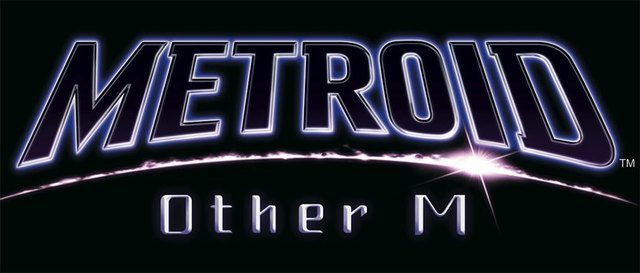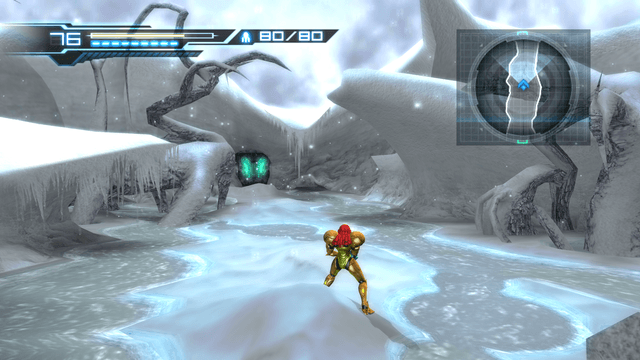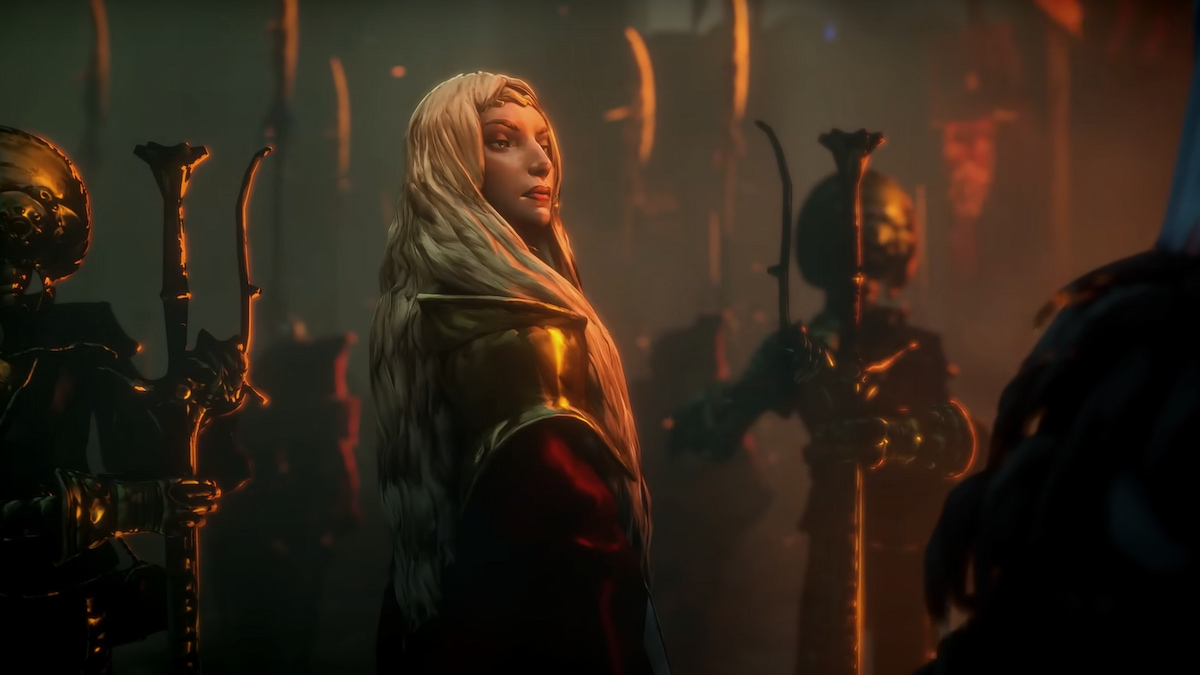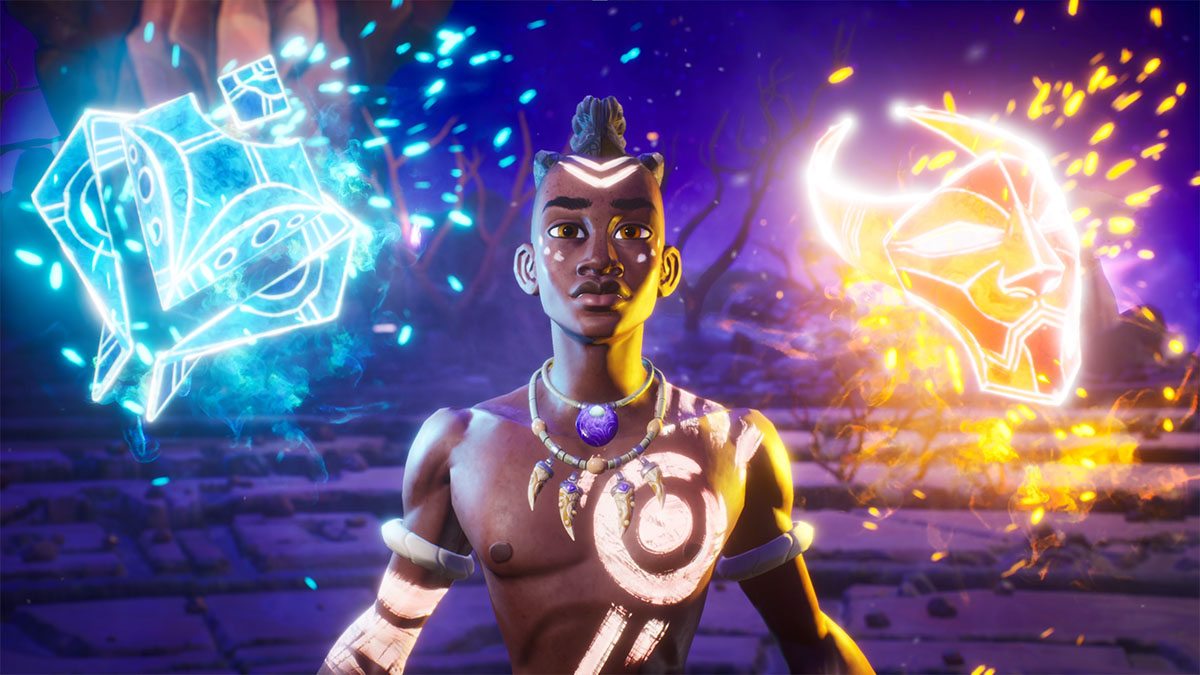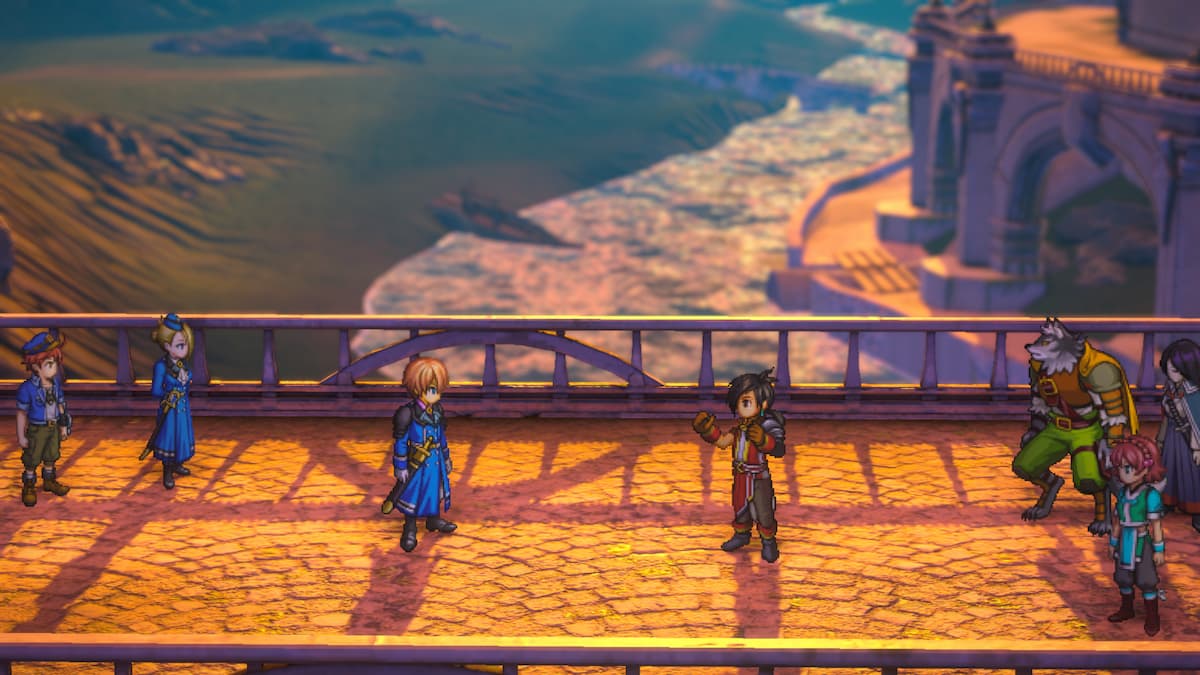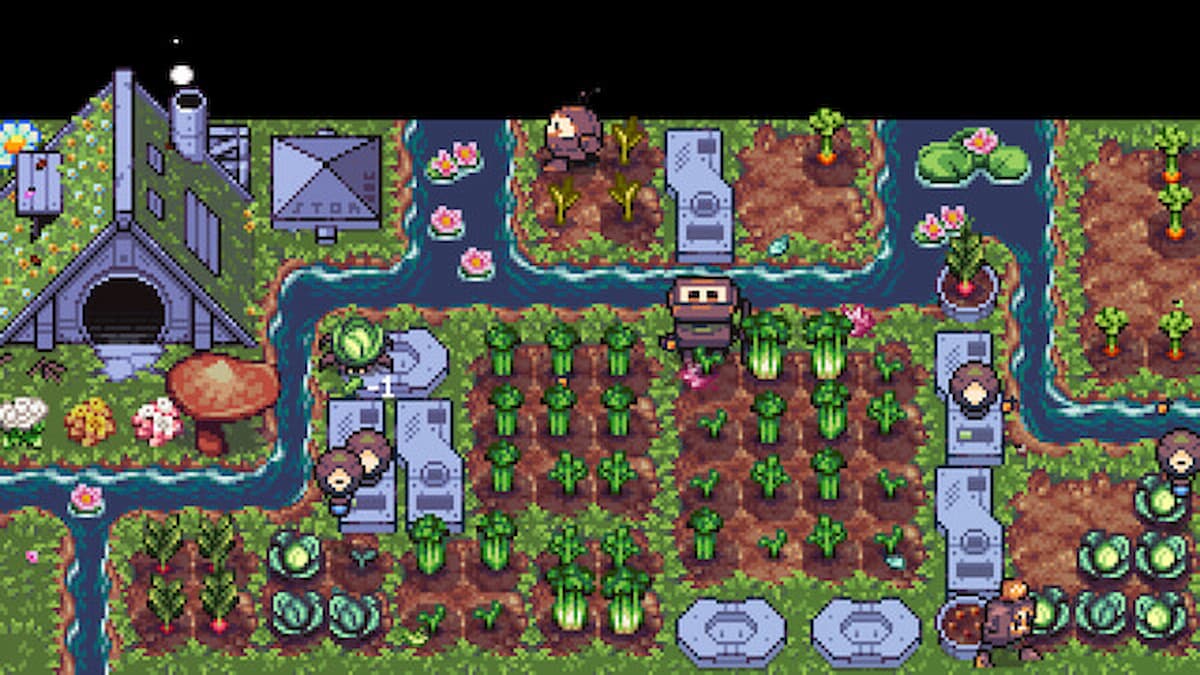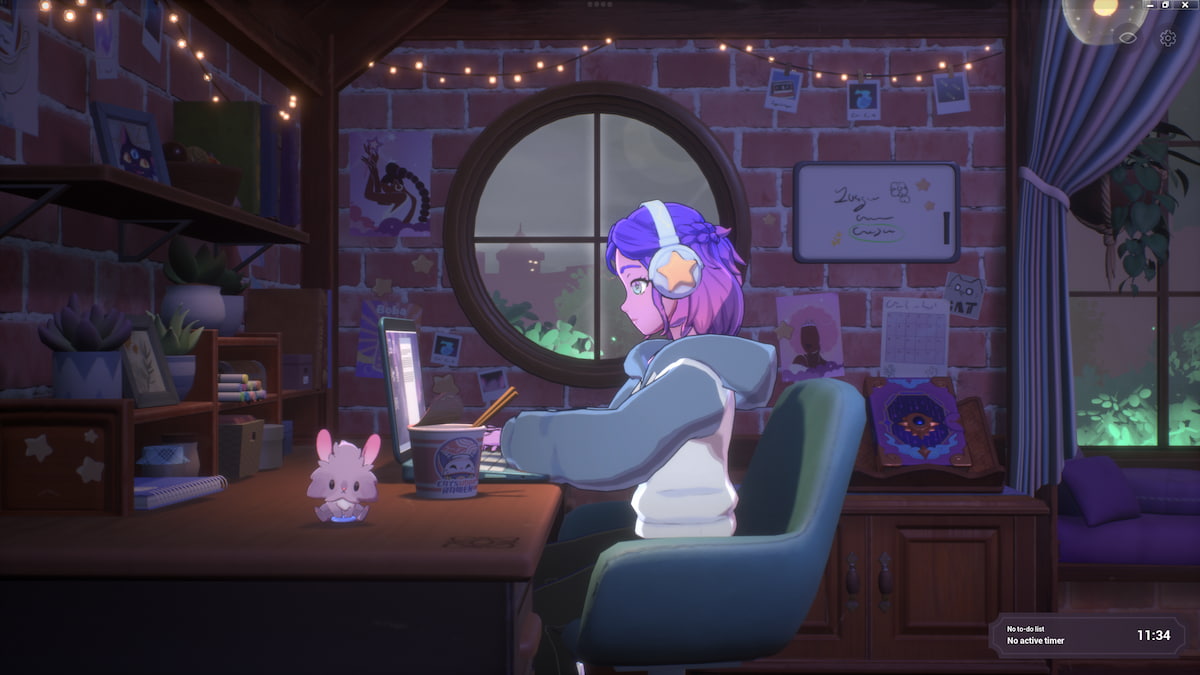After 11 Days of Rewind Reviews, we have finally reached the final game in Nintendo’s Metroid series. I must say, this process has been both amusing and sometimes grueling as many Metroid titles have been fun, while others have been downright painful. By playing the Metroid series from its origins to present day has really made me appreciate both how much the game has grown since 1986. It has also made me realize something very interesting: Metroid games have never set the standard for adventure or exploration games.
I know for a fact that I set the fuse on several die-hard fans at least by saying that, but it is the truth. Metroid has never been the best the genre because it is not trying to be the best. Instead, Metroid has always been about trying something new or pushing hardware to the limits, much like its fantasy counterpart The Legend of Zelda. I know for a fact that I’ve set off several other fan bases in saying that, but the truth of the matter is that Nintendo has used both The Legend of Zelda and Metroid to benchmark or push the limits of their consoles. Both games have similarly been used to test new ideas, whether it would be the very first open-world Nintendo title (Zelda Wii U) or their first FPS game (Metroid Prime).
Metroid Prime brought Nintendo into the FPS genre, as well as pushed the limits of the Gamecube’s graphics processing
“But RR-senpai, how does this relate to a game as terrible as Metroid: Other M? Surely you aren’t going to use nostalgia to prove it is actually a good game!”
Some readers might be crying out those words right now (or maybe that’s just wishful thinking…). The fact is: Metroid: Other M might actually be a pretty good game once we get over our own entitlement.
As with all Rewind Reviews, Metroid: Other M will undergo a review process through the eyes of a modern critic. No nostalgia glasses, no excuses, no rationalizing hardware limitations, and no sparing myself from angry fans and readers who really, REALLY, hate this game. Nothing will excuse the game from anything that we – as modern gamers – would expect to see in the genre today. With that said, let’s get our earplugs ready for Samus’s awkward, and pray that Team Ninja does not perv out on gaming’s Virgin Mary in Metroid: Other M for the Nintendo Wii!
WARNING: Some people will be very angry at me by the end of this review. Also, this review is longer than 5000 words, so make sure you have time before reading this…
The Plot
Okay, I’m not going to bother summarizing this one, or warn for spoilers because ultimately every single person reading this article already knows about Metroid: Other M’s story. For those who have not already gone and watched the cinematics, you can find Metroid: Other M – the Movie below. If you have not watched or played the game, use Ctrl+F on your keyboard and type in Back on Topic to skip over all possible spoilers. You have been warned.
Now, some of you might be wondering why I presented both the English and Japanese dubs when it is clear that the subs are not any different from the North American release. What I want to make clear in terms of the plot for this game is that it actually is not nearly as bad as people have made it out to be. How? The answer is simple: Metroid as a series has never had a good plot.
The Other M Plot Controversy
Remember the Prime series that everyone loved so much? Remember how much you loved the story in the game? Are you sure? Unless you haven’t played the games recently, or you simply haven’t kept up with this series of Rewind Reviews, readers should understand that the only game with an actual “plot” behind it in the Prime series was Metroid Prime 3: Corruption. As another GameSkinny member pointed out in the comments section on my previous article: “the lack of voice over by Samus just felt stupid at several points” (thanks Elijah!).
While I did not believe it particularly harmed the game, he did have a point: Samus needs a voice if she is going to be present in a narrative where other characters are speaking. This is especially true since the Prime games are the only games where (after remakes are presented) Samus does not speak. How do we know this? Metroid: Zero Mission has Samus talk at the very start of the game, as well as before the Space Pirate Mothership section. In Super Metroid, Samus narrates to the player the events of the previous games, as well as her thoughts on the matter. In Metroid: Fusion, Samus narrates on many occasions whether it be in elevator shafts, having dialogues with the ADAM computer, or in the intro or extro of the game. And guess what? In every Metroid game that Samus speaks, the most common theme is not bravery but rather fear.
This is where I address the first criticism against Metroid: Other M: Samus’s incompetence and fear.
Anyone who has followed my Rewind Review series will remember that I said Metroid: Zero Mission’s art style copied a lot from the Metroid manga. While it is still true, I forgot to mention that the Metroid manga is also canon with the Metroid series as a whole, presenting us with the first insights into the inner workings of Samus’s life before becoming the renown bounty hunter we have come to love.
In this scan of the Metroid manga we learn that Samus is actually a sufferer of a mental condition we commonly know as Post-Traumatic Stress Disorder (or PTSD for short). For Samus, Ridley is the trigger of said PTSD, for he is responsible for the death of her family when she was still a child. While I’m not entirely sure about some of our braver GameSkinny readers, I’m pretty sure that even without PTSD I would be wetting myself if a plasma-breathing space dragon killed my family – or was trying to kill me at any rate.
How does this relate to Other M? One of the major complaints about the plot of Other M is the scene at about 55:50 in the videos I presented. This is where Samus has a breakdown after seeing Ridley in the Geothermal Power Plant. The scene portrays Samus as a scared little girl that needs Anthony to save her – which also leads to his (supposed) death, might I add.
The scene is perfectly forgiven by the PTSD explanation since people who suffer from the disorder receive: “an over-reactive adrenaline response” that evoke symptoms such as “disturbing recurring flashbacks, avoidance or numbing of memories of the event, and hyperarousal”. In layman’s terms: you are literally paralyzed in fear. In my own experience I know that an adrenal response left me frozen in place crying as my head pulsated madly, leaving my hearing and motor functions useless as my vision flashed red constantly. Now imagine Samus is in that very state when she encounters Ridley. Other M captures the scene perfectly.
“But RR-senpai, Samus has fought Ridley at least 4 times at this point, even if Prime is not considered canon! How do you explain this?”
Seriously, Ridley, how many times do we have to kill you before you stay dead?!
The answer – once again – is simple. Let’s say that somewhere between Zero Mission (where Ridley does not actually die) and Super Metroid (where Ridley is definitely dead in order for the canon to make sense) Samus finally was able to confront her fears of Ridley. Let’s also maybe give Samus the benefit of the doubt and say that the Baby Metroid acts in the same way as an assistance dog does for PTSD patients. Then, let us remember that the Baby Metroid was kidnapped by Ridley (giving her the motivation to fight Ridley) and that the Baby Metroid died literally moments before Other M takes place. This would explain her emotional vulnerability in Other M when she confronts Ridley as seeing the beast that you finally thought was dead literally came back from the grave. At this point in the story, Samus does not know that the researchers had cloned Ridley, so seeing Ridley in the Geothermal Plant is literally the closest thing to wide-awake nightmare fuel that you can get.

The fact that Samus is able to snap out of her PTSD state and fight the Ridley clone at all is a feat that no man could ever do in real life. While another GameSkinny author claimed that Nintendo attempted to ruin Samus’s character with Other M, I would strongly argue that Other M has done nothing but paint Samus Aran as more of a “badass” than any preceding title. After all, courage is not the absence of fear, but rather the overcoming of fear.
“I don’t think that I would be as scared as Samus was in that scene, even with PTSD though, RR-senpai… Besides, I still don’t understand why she would be scared. She wasn’t scared in previous games.”
Seriously? I’m pretty sure the people thinking this are the same people who piss themselves silly when they get jump scared in Alien: Isolation or Five Nights at Freddy’s. I would even go so far to say that at least some of you would jump in your seat if you watched the animated abridged version of Markiplier’s Five Nights at Freddy’s 2 video on the right. If you aren’t one of those people and say this still… well… congrats, I guess. I have no idea what the world did to you, but I applaud your… lack of adrenal glands? You should join the army. They could use a man of your talents. *sarcasm*
That aside, of course she wasn’t scared in previous games. The hardware wasn’t capable of displaying Samus’s fear. So I ask: which game was truly capable of displaying fear where Samus displays none?
Snarky voice: “The Metroid Prime series! *snort*”
You haven’t played Metroid Prime in a while, have you? In just about every event cutscene in the Metroid Prime series Samus takes a step back on her weak foot (her left foot since she is likely right-handed), and swings her arm cannon behind her. That is a fear reaction, for any soldier-in-training will tell you the stupidest idea you can do when an enemy appears is hold your weapon behind you. Not only that, but Samus has this “fear reaction” highlighted in just about every single Prime game.
In Metroid Prime Samus takes a step backward when she sees Meta Ridley hanging in the frigate, and again when the boss fight at the end of the game starts. In her encounter with Meta-Ridley in Metroid Prime 3: Corruption Samus frantically fires shots at the creature as it plummets toward her. A “macho” move would have been to move out of the way like a sane person, but in Samus’s frantic state she begins firing upward at an angle, effectively doing nothing to stop Ridley from assaulting her. In fact, Samus portrays her “fear before courage” act most clearly in the Omega Ridley battle, taking a full 10 steps with her cannon behind her back as Ridley approaches before finally composing herself for battle.
So I challenge you, Mr. Critic: name one sequence where she has been fearless in front of Ridley. Try me.
Desperate voice: “Well she still wasn’t afraid in the 2D games!”
Once again, hardware limitations. The only games that were 2D prior to Other M that were capable of rendering the fear in Samus’s eyes when encountering Ridley was Fusion and Zero Mission. Actually, there was a scene like that… wasn’t there?
Here’s Samus afraid of Ridley in Metroid: Zero Mission.
Now, the problem of Metroid: Other M’s plot is not yet solved as some critics have stated that Samus’s reliance on the aid of others is a problem since she never needed help before. One of these scenes happen earlier than the Ridley fight where Samus gets saved by Anthony after being pounced upon by a monster known simply as “the creature”. While I would try to argue this critique myself, my girlfriend was able to put it in better words than I could:
When Samus is pinned down by the purple creature in the grassy area (approx. 34 min mark in the videos) she has already shown us the bravery that people expect from Samus twice. She was the only one able to fight the cybernetic Space Pirates, and she also was the only one who could fight the giant-purple-bug thing at the start of the game. The fact that she got pinned down by the creature was only because she did not expect it to be behind her. She ran down a building that has no freaking windows and it would have taken her some time to get there. When the creature pounces on her, it’s from behind. Not only that, but we are not as useless as the online videos show us. We are shooting at the tail to prevent it from killing us, and only when we run out of missiles does Anthony finally shoot the creature off of Samus. If anything, she is the bravest out of the group since she is able to stay calm while a giant f@#%ing creature is on top of her. Had it been any of the other Galactic Federation guys, they would have been f@^$ing dead the second it jumped on them. I don’t understand why the feminists were complaining about this scene. They are soldiers. What, would they expect male soldiers to let them die on a battlefield so that the woman could spare her f#%!ing girl-power points by not being saved by a man? B#%@^ PLEASE! Besides, no one seemed to have a problem with that one guy saving Samus from Ridley in Corruption. I guess when the man is an alien ice-surfer dude whose head looks like a penis it doesn’t matter…
While she made her point, I would also tack on that Samus is responsible for saving Anthony from one of the mini-bosses later on (around the time you get the grapple beam).
With the controversies aside – as I have spent enough time on it already – Other M‘s only failure in terms of plot is the constant use of narration, particularly in the first 10 minutes of the game. A lot of Samus’s descriptions could have easily been replaced with zoom-ins of points-of-interest, while the backstory with Adam would have been better received if it had been placed elsewhere in the game as it would be an interesting story point if it had not been crammed in at the very first mention of Adam.
The only solid complaint I have in terms of story design is the force-feeding of maternal symbolism in – once again – the first 10 minutes of the game. Honestly, it was as though the writers weren’t even trying: Baby Metroid, “Baby’s Cry S.O.S. Signal” that has the urgency of “A baby’s crying” (as opposed to non-urgent S.O.S. signals, I suppose), and the BOTTLE SHIP. In fact, I believe that the first 10 minutes alone are responsible for the bad reception of the game’s plot as the bad taste it leaves in players’ mouthes is enough to ruin the rest of the game.

I’ll admit it, this line made me cringe…
The writing – in fact – gets much better the further you progress into the game, suggesting to me that the writers must have been changed half way through development. My evidence of this comes from the fact that the force-fed maternal symbolism never appears again after Samus lands on the BOTTLE SHIP. Even the meme-worthy “the baby” line stops appearing at this point.
While the scene with Samus breaking down and activating/deactivating her Power Suit in an attempt to stop Adam from going on a suicide mission may be a bit campy, it’s simply a culture shock for American audiences who are unaccustomed to anime tropes. The scene does make sense though. Samus is losing not only her father figure, but also the only real “friend” she ever had. I can only imagine how much that sucks, let alone how to portray it any better given the setting provided.
While by no means a perfect scene, Adam’s sacrifice did make me feel a bit depressed that Samus was losing her only friend
Sorry Samus, but I’m only bringing this up again because I love you…
The last common complaint about Adam having to give Samus permission to use her weapons is the weakest of them all. They literally explain that most of Samus’s weapons are deadly to anyone within the vicinity. Could you imagine how easy it would be to kill a survivor accidentally with a Wave Bean that goes through walls? Or how about a Power Bomb that has the force of a nuclear warhead? Also, do I really have to mention Metroid Prime again?
The only thing that truly erks me in terms of plot in Other M is Jessica Martin’s voice acting in the English dub. Martin sounds constantly confused when she tries to pull off the “stoic female”, ending each sentence or sentence fragment with a “?” accent that drove me insane. This is also the reason I presented the Japanese dub beside the English dub since Samus’s voice actor in the Japanese version pulls off the voice of Samus so much better. The other voice actors in the English dub do a good job of capturing their character, so I have no idea why Samus’s voice is so… misrepresented. According to my girlfriend: “It sounds like they just gave her the script and recorded her first reading of it. It almost sounds like she’s making sure with the producers that she is pronouncing Zebes correctly.”
Back On Topic
Now that we have all the commentary on the controversy out of the way, I believe it is time to discuss the actual plot.
Little Birdie is a strange one
While the game’s plot is far from complex, my first run through the game was done without having seen any gameplay footage or cinematic “movies”. As a result, I was actually pleasantly surprised by the mystery of the game. The creature known as “Little Birdie” grabbed my attention for being somewhat out of place, and it made me wonder why it kept appearing. The whole “Deleter” segment, despite its corny bad-guy name, had its merits as I truly wondered who the “Deleter” actually was. Some critics have stated that the game never reveals who the Deleter is, but I would recommend maybe paying a little more attention. For a bunch of people who have their fair share of grievances about the plot, they sure didn’t pay much attention to it.
Now that I think of it, the game’s plot feels anime-like. Actually… all of Metroid’s plotlines aside from the Prime series feel like anime. It’s almost like the 2D Metroid games were designed for a Japanese audience, while the American-made Prime games were designed by Americans for Americans… Huh. Probably just a coincidence
TL;DR: Metroid: Other M’s plot isn’t the greatest in the world, but it’s not sexist, not character breaking, and frankly – by Metroid standards – it’s probably the best we’ve got so far besides Fusion.
The Gameplay
The Beautiful:
At the start of this article I stated that Metroid has often been used to test new horizons. Metroid: Other M is the epitome of Nintendo doing this.
Other M has some of the most interesting and engaging boss battles in the history of the Metroid series thanks to its unique controls
Unlike any other Metroid title before it, Other M presents us with an action-based 2D Metroid title that actually functions quite well. Having been developed by Team Ninja – a company known for both the Ninja Gaiden and Dead or Alive series – Other M feels like it has been handled by a team that knows how to develop an action game. Team Ninja has focused on one of the main points that made Super Metroid so great, and that was the ability to find alternate ways to defeat enemies. This is true in Other M in that most enemies in the game have at least one exploitable weak-point that can greatly speed up mini-boss or boss fights.
This is also the first game where Samus does not feel like a robot. Considering her lore has always portrayed Samus as an adept agile fighter, the games have never truly reflected this. In the 2D Metroid games, Samus has always suffered from being limited to 8-direction aiming that has never made Samus feel any more agile than the average run-and-gun (aside from her wall jump abilities), while the Prime series turned her into a tank that was incapable of doing anything more than hop around while shooting.
Other M has remedied these problems through gameplay changes, control improvements, and presentation. Wall jumping has been streamlined so that players only need to hold one direction in order to continuously jump from wall to wall (although you can play like you did in other 2D titles if you really want). Also, the visual effects of the booster pack on Samus’s back make wall jumping feel more “cool” than in previous games. Shinesparking has become a key feature of the game, and the visual effects that come with it make Samus look like a force to be reckoned with.
Most important in making Other M a successful action game is the addition of the “sensemove”, “lethal strike”, and “overblast” techniques. Sensemove allows players to dodge enemy attacks by pressing the + pad at the right time before getting hit, while lethal strikes take out downed enemies in a fashion similar to The Legend of Zelda: Twilight Princess’s “final blow”. Overblasts also create more variety in attack patterns by allowing players to leap onto certain enemies and fire directly at their cranium. It is a battle system that is both rewarding, and simple to use, providing a good fast-paced action experience for players who are not completely accustomed to the genre.
If all of this is not promising enough to at least give Other M a try, then perhaps the fact that the game controls as well as all previous 2D titles will. If fans are willing to complain that the game uses the + pad instead of an analog stick, then I think it’s time they revisited the Gameboy and Super Nintendo titles…
The Good:
As with any 2D Metroid title, there are plenty of places to explore for powerups. After doing a semi-casual run through Other M I was able to find only 36% of the available upgrades (the lowest in my entire run through the series), and so I can safely assume that the ones I missed are out of common sight as I did make sure to check all of the usual suspects.
The concentration feature is also a neat feature in the game that keeps up the pace of Other M since it allows players to recharge one energy tank back to full (provided that they are under 10 health) after a 5 second period. This feature is also used to restore missile ammo when Samus is above the “red zone”, thus eliminating the need to “farm” health and ammo when low. The feature is hardly overpowered as many late-game enemies are capable of taking out Samus before the feature is available, and using the concentration feature is risky if enemies are still present. On this topic, I should also note that I played the game during a normal-difficulty run and still managed to receive a game over screen approximately 20 times before beating the game (including the post-game objective).
One complaint I often hear is that the game’s cutscenes break up the pacing of the game, however, I believe these critics have never played past the first 20 minutes of the game. There are fairly large 40-70 minute sections that have no cutscenes, and even when they do the cutscenes are rarely longer than 30 seconds long. While cutscenes during sections with a heavier plot tend to drag on to the 1-2 minute mark, they are nothing that truly “break” the game’s pacing – at least on the first play through.

Another complaint I often see about Other M is the control scheme. Missiles and the Grapple Beam are only accessible through the first-person mode (which requires you to point the Wii Remote at the screen) while Beam and Platforming (and moving in general) is only accessible in third-person.
I can assure players that the swapping between the two perspectives is not only smooth, but also very easy to get used to so long as your hands are larger than the average human’s hand over the age of 3. If that is not enough to convince players that it is not an issue, then perhaps the fact that missiles and grapple beams are not a key player in the game.

As noted earlier, Metroid: Other M is an action-platformer title. As such, since missiles do not make for fast-paced action, the enemies in the game have been adapted to fit the beam-focused gameplay. While the grapple beam and missiles are used on certain enemies, they are typically only used to hit certain weak-points, and even in those cases there is usually a wide window for players to swap into the first-person mode and do what the need to do. The other uses of the grapple beam and missile launcher are typically in puzzles or exploration, and if you can’t find time to swap Wii Remote positions with no enemies in the room, you shouldn’t play an action game. Honestly, anyone who has an issue with this mechanic is playing the game wrong and needs to dispose of their previous notions of what Metroid games play like. That’s all I can say.
A brief praise to Team Ninja as well for being able to cram so much onto the Wiimote. Bravo.
The Bad:
The fact that players have to get used to the controls is a small issue, but an issue nonetheless. Furthermore, there is one control issue that cannot be fixed by simply “getting used to it”, that being the + pad’s awkward acceleration. Samus walks funny in Other M, and while her animation reminds me of early 2D titles in its gait, it simply does not translate well into a 2.5D environment. Areas are inconsistent in their use of scripts to make Samus walk in a circle in rooms where the path takes a turn, making it somewhat difficult at times to get around certain areas. While it rarely becomes a true problem, it is worth mentioning as a feature that could have been improved at least slightly.
The Downright Hideous:
Sorry Other M, even I can’t redeem you on these insufferable points…
The game has no method of skipping cutscenes, effectively ruining the game’s re-playability. Unless of course you don’t mind the Japanese dub, in which case the game is totally re-playable. As much as I sound like I’m bullying Jessica Martin at this point, she just doesn’t play Samus well. I’m sorry. Please forgive me. I doubt I’d be great at voice acting either. Oh yeah, and the first 10 minutes of the game has writing that is on-par with a 12 year old’s Metroid fanfic that is trying to be deep. While plot is typically not considered in the “gameplay” section, it is in this case because it ruins the re-playability of the game, and no one should have to suffer 10 minutes of poorly written fanfic before getting to the decent parts of the game’s narrative.
The Presentation
Metroid: Other M is actually a beautiful game. Seriously. It even does “generic ice stage” better than Metroid Prime did.
While it is difficult to see on the Wii, I reccomend playing the game in a Wii U since it is capable of running the game at 1080p which really shows how much work Team Ninja put into polishing the textures and models. Samus’s sleek design makes every action scene look amazing, and the particle effects on the beam weapons can melt the heart of the harshest critic as they look as great as fanboys and fangirls imagine Super Metroid’s beams look. Animations are fluid, and the pre-rendered cutscenes don’t look so much better than the in-game ones that it ruins the immersion.
You just can’t recreate the satisfying feeling of wrestling a giant creature and blasting its brains out like this in any other Metroid title
One of my favorite aspects of Metroid: Other M’s design is the careful use of slow motion and close-up cams. They really help make the game feel flashy, something I feel is important in a fast-paced action-combat platformer. The graphics are also the best among the Wii’s library, toping Super Smash Bros. Brawl as Team Ninja seems to have found the perfect performance balance to make Other M render at a decent framerate while still looking its best.
Boss battles are also among the most visually impressive thanks to the 2.5D gameplay. Ridley, for example, is finally able to execute his infamous “drag along the wall” attack that we haven’t seen since Super Smash Bros. Brawl during the Subspace Emissary mission with Pikachu.
Music in Other M similarly keeps up with the pacing. Each BGM carefully reflects the situation Samus is in, while also staying well within the realm of sounding environmental, much like earlier Metroid titles. My favorite themes are the battle themes as they really get the blood pumping while you are dodging left and right from incoming enemy fire. The game also features my favorite rendition of the “Ridley Theme” in the entire series.
The Verdict
I walked into Metroid: Other M expecting nothing, armed with only the negative scores and criticisms of the game’s plot. Ultimately, what I discovered was that the only problem with the game was the fans. Everyone was so caught up in their own idea of what a Metroid game was supposed to be that when Metroid: Other M showed up and brought something new to the table they shot it down, almost like another series I know…
While the fans can argue that the plot, the gameplay, or even the presentation are terrible (yes, they complained about the music and graphics too), objectively they’re the most sound in the series so far. At the risk of losing my reputation with Rewind Reviews, I would like to boldly go against the grain and say: If players can find the willpower to ignore the first 10 minutes of the game, Metroid: Other M successfully does something new, and it does it well.
As a Metroid title, Metroid: Other M does everything right. The exploration is there, the story is the best so far (once again, ignoring those first 10 minutes), the gameplay is completely innovative as well as mechanically sound, and the voice acting is pretty sound (aside from Samus herself). Play the game with Japanese voices and it’s a pretty good game.
According to GameSkinny’s rating system:
“A ten is not, interestingly enough, a perfect game. It is the highest point on the scale, but no game is without flaw. Every game will have moments of failure, and even those can still be classified as a 10 on the scale. A ten means this game falls into the “must play” category. This game redefines a genre and will inform other games that follow, the kind that becomes a piece of the overall conversation about games. Very few games should fit this category.”
By all definitions, Metroid: Other M fits the 10/10 score criteria. I apologize in advance to the haters, but the fact is that you have to actually play the whole game before you can pass judgement on it. The game has its flaws, but as I keep saying, it’s only in those first 10 minutes that were terrible, which is not bad considering it was a game that took me about 12 hours to beat. Furthermore, the game is a “must play” for the gameplay alone as the mechanics and fighting style brings some fresh ideas to the Metroid series, while still maintaining many of the key features of the series as a whole. It redefines the series, and it certainly has become an overall piece of conversation since Metroid fans certainly can’t seem to stop talking about it, more so than they do the supposedly “good” Metroid games. Almost as if they secretly love the game, but say they hate it.
I got my eye on you, you tsundere Metroid: Other M lovers, you…
If I haven’t made it clear enough by now, Metroid: Other M gets a Rewind Reviews 10/10. I am perfectly willing to take all the flak for this, even if it ruins my credibility, because the game honestly has done nothing to deserve the reputation it has. Samus isn’t the girl you thought she was, and Metroid isn’t the series you thought it was either. Based on GameSkinny’s rating system the game cannot fit into any of the lower scores, so I’m telling you: don’t knock it until you try it. If you come in expecting nothing, you’ll come out pleasantly surprised.
With that we come to the end of my Metroid Rewind Review, and I cannot imagine a better way to end it. This is not only my longest review, but the controversies surrounding the game also sparked something in me that the previous games simply could not do since they were so well recieved.
I can only imagine what Metroid Prime: Federation Force holds in store for the future of the series. Will it focus on action like Prime: Hunters and Corruption did? Or will it be truly as terrible as the community has already made it out to be? Will Federation Force mark the begining of Metroid’s own “Sonic Cycle”? What about your own opinions on Metroid: Other M? Voice your opinions in the comments section below, and I would love to have some open debates on these questions.
I plan on doing a full review of Metroid Prime: Federation Force when the game comes out on the Nintendo 3DS. Unfortunately, that won’t be until next year at least so don’t hold your breath Metroid fans. Until then…

See you next mission!
Reviews in this Series:
- Metroid (NES)
- Metroid II: Return of Samus (GB)
- Super Metroid (SNES)
- Metroid Fusion (GBA)
- Metroid Prime (GC/Wii/Wii U)
- Metroid: Zero Mission (GBA)
- Metroid Prime 2: Echoes (GC/Wii/Wii U)
- Metroid Prime Pinball (NDS)
- Metroid Prime Hunters (NDS)
- Metroid Prime 3: Corruption (Wii/Wii U)
- Metroid: Other M

